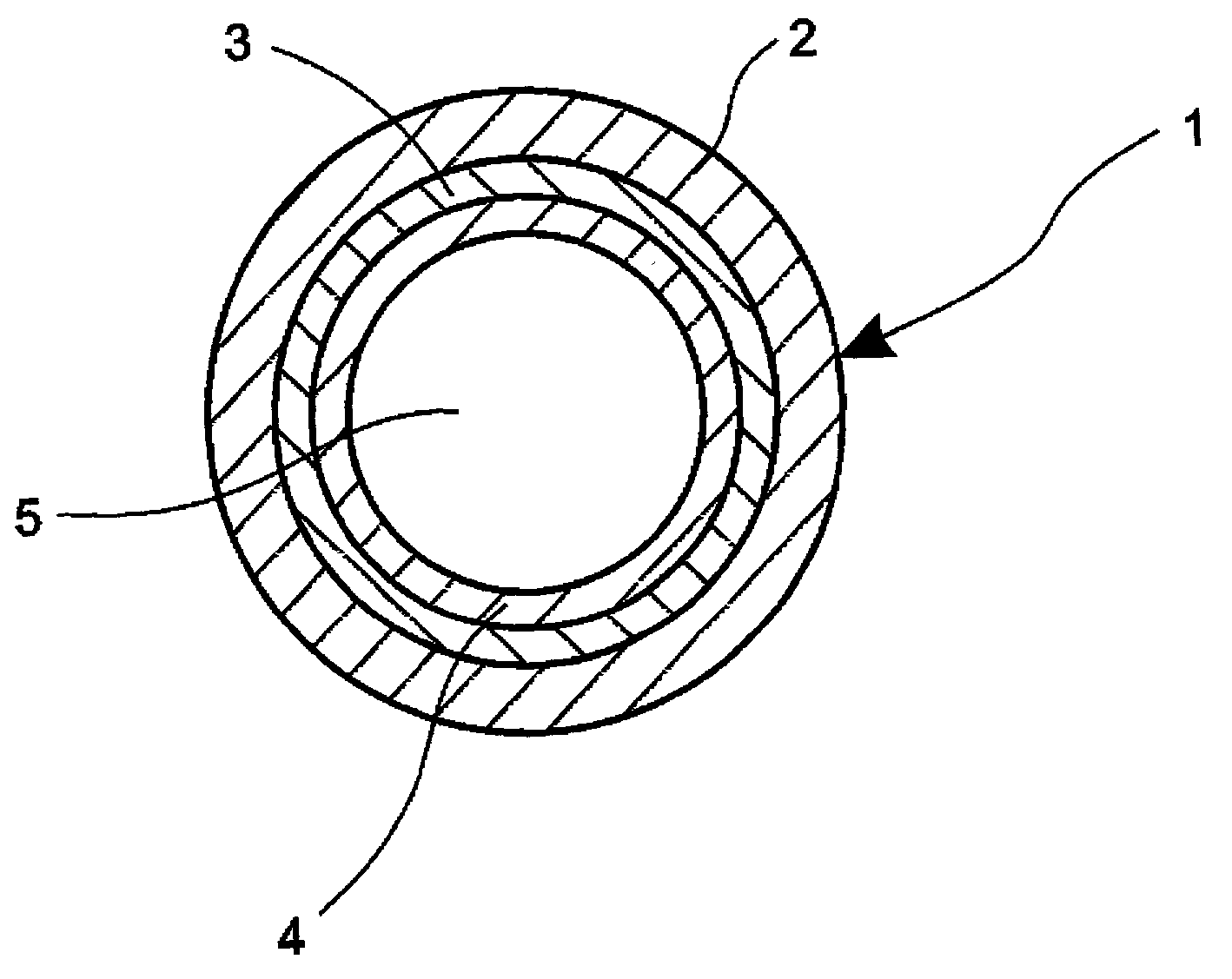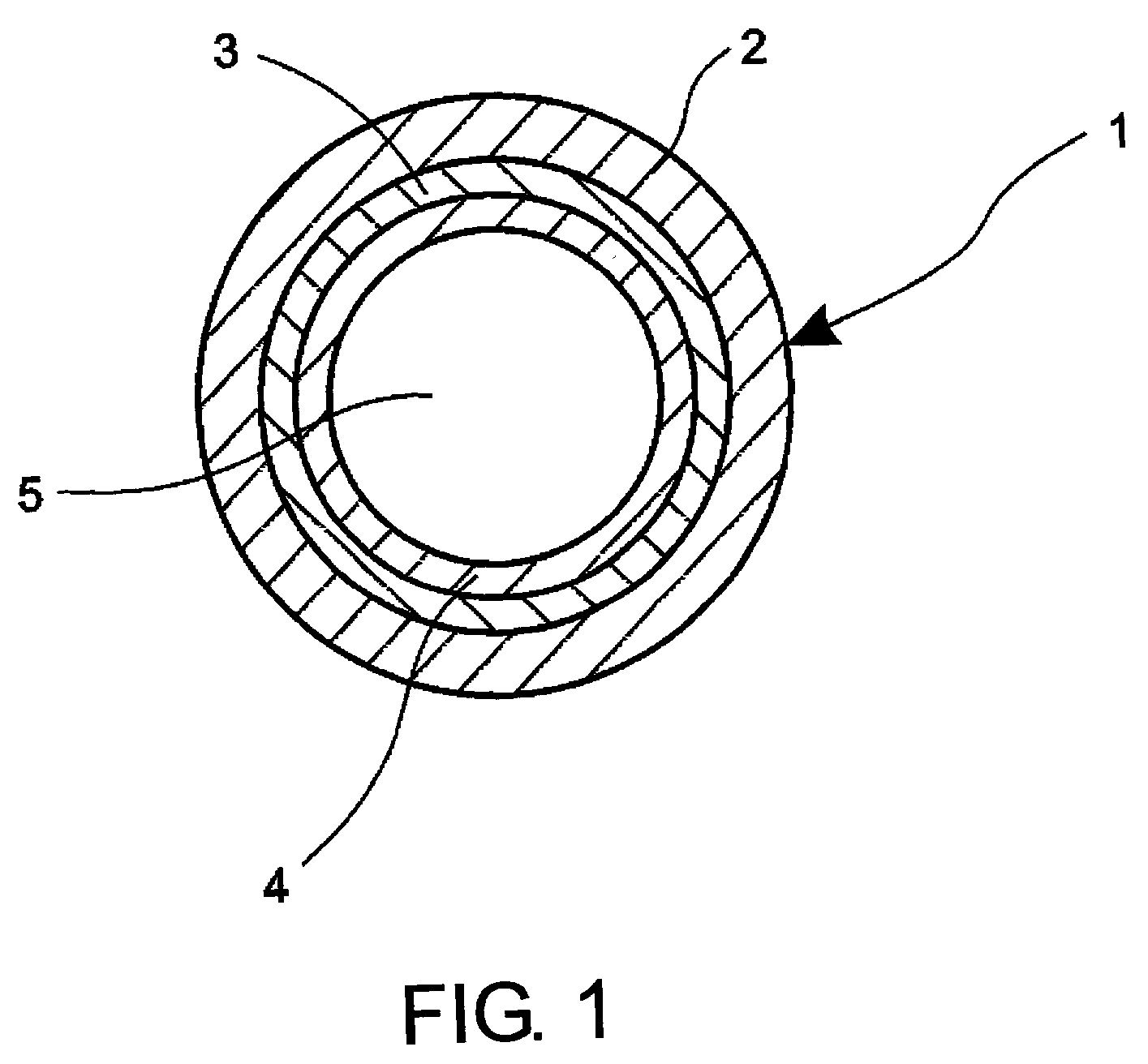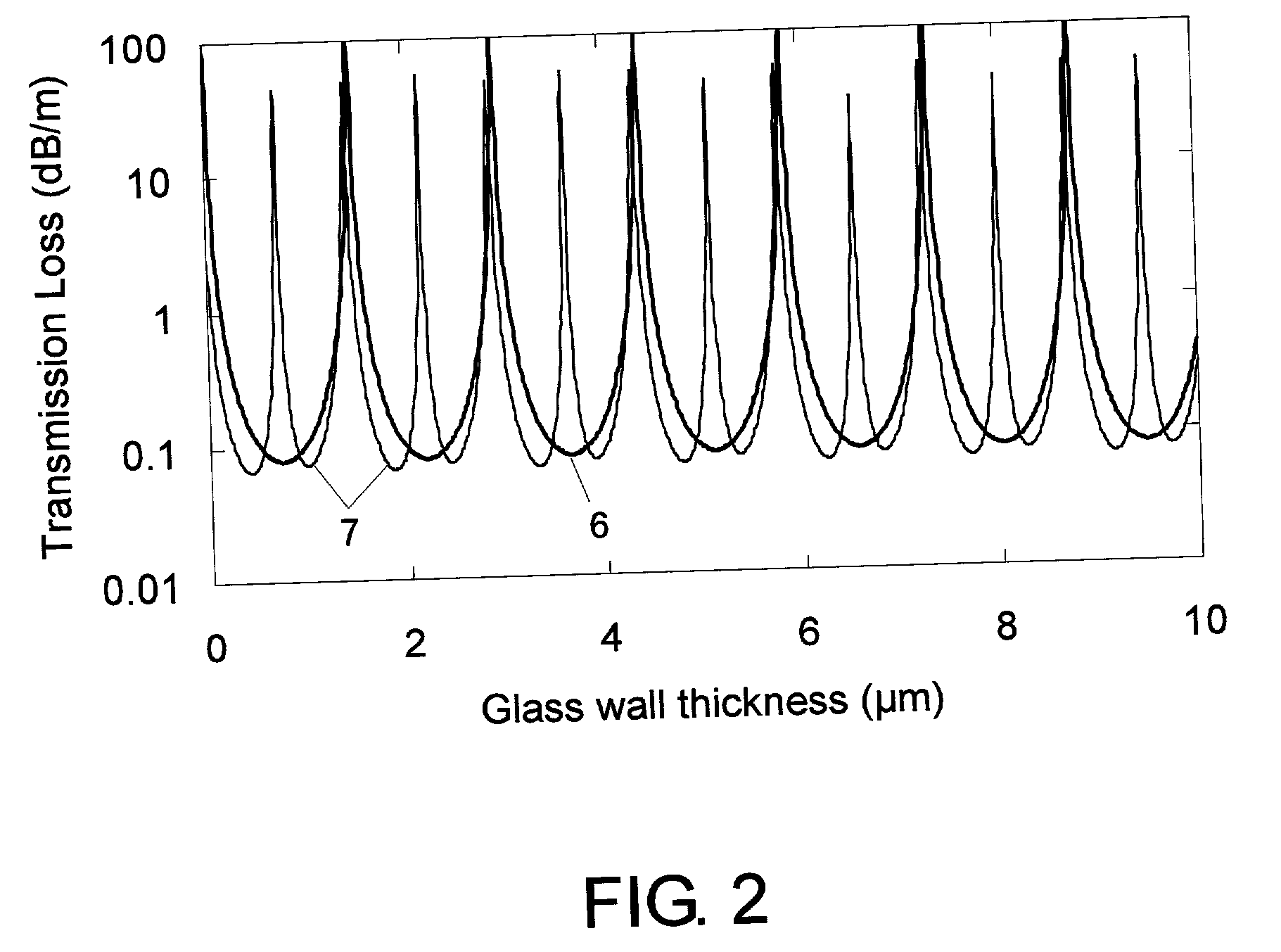Method for making hollow glass optical waveguide
a hollow glass and optical waveguide technology, applied in glass making apparatus, other domestic objects, manufacturing tools, etc., can solve the problems of limited wavelength span, difficult to make a waveguide with a very small inner diameter, and high manufacturing cos
- Summary
- Abstract
- Description
- Claims
- Application Information
AI Technical Summary
Problems solved by technology
Method used
Image
Examples
Embodiment Construction
[0015] Preferred embodiments of the present invention will hereinafter be described with reference to the accompanying drawings.
[0016] FIG. 1 is a cross sectional view of an embodiment of the hollow waveguide according to the present invention. As shown in the figure, the hollow waveguide 1 is composed of a glass layer 2, a metal layer 3 on the outside of the glass tube, and a protective layer 4.
[0017] In the present invention a glass tube is employed as a preform. Absorption coefficient of the glass should be small at the target wavelength region. Silica glass is a preferable material because of the high transparency in ultraviolet, visible, and infrared regions. Some glasses which have lower glass transition temperature, such as Pyrex glasses and sodium glasses, are preferred when low-cost production is important. For mid- to far-infrared regions, some special glasses such as chalcogenides are preferred due to the high transparency at the longer wavelength than 3 .mu.m.
[0018] A gl...
PUM
| Property | Measurement | Unit |
|---|---|---|
| lengths | aaaaa | aaaaa |
| inner diameter | aaaaa | aaaaa |
| thickness | aaaaa | aaaaa |
Abstract
Description
Claims
Application Information
 Login to View More
Login to View More - R&D
- Intellectual Property
- Life Sciences
- Materials
- Tech Scout
- Unparalleled Data Quality
- Higher Quality Content
- 60% Fewer Hallucinations
Browse by: Latest US Patents, China's latest patents, Technical Efficacy Thesaurus, Application Domain, Technology Topic, Popular Technical Reports.
© 2025 PatSnap. All rights reserved.Legal|Privacy policy|Modern Slavery Act Transparency Statement|Sitemap|About US| Contact US: help@patsnap.com



